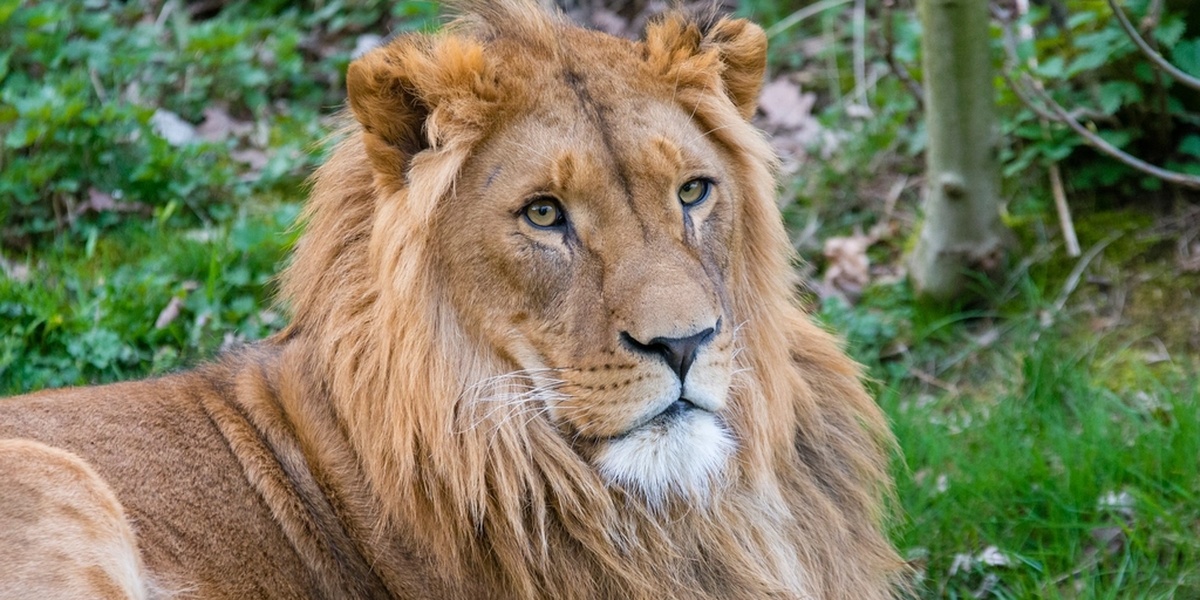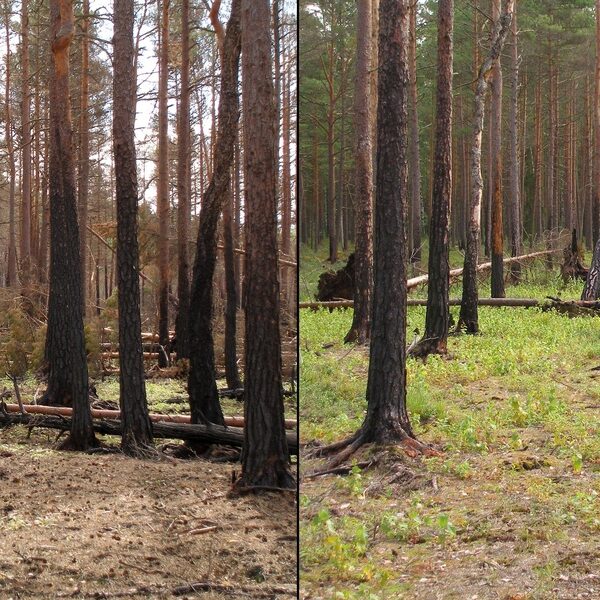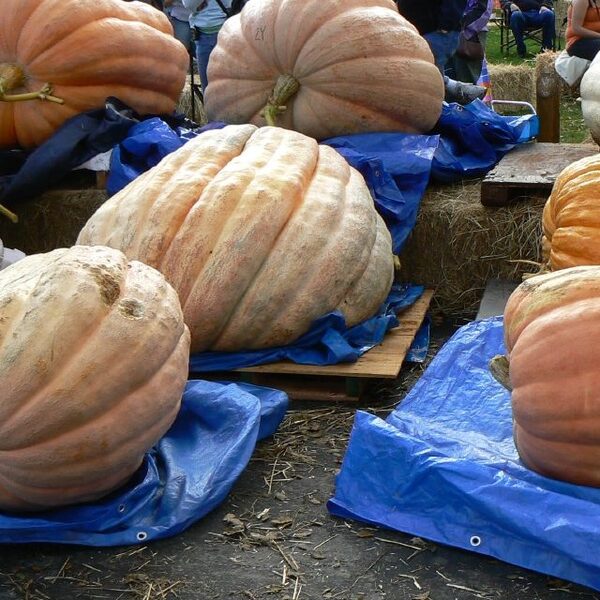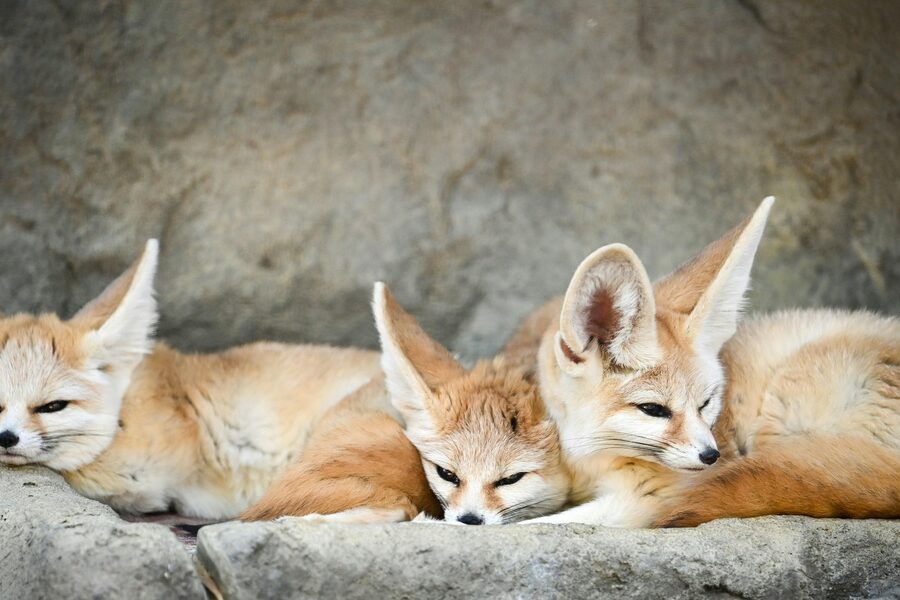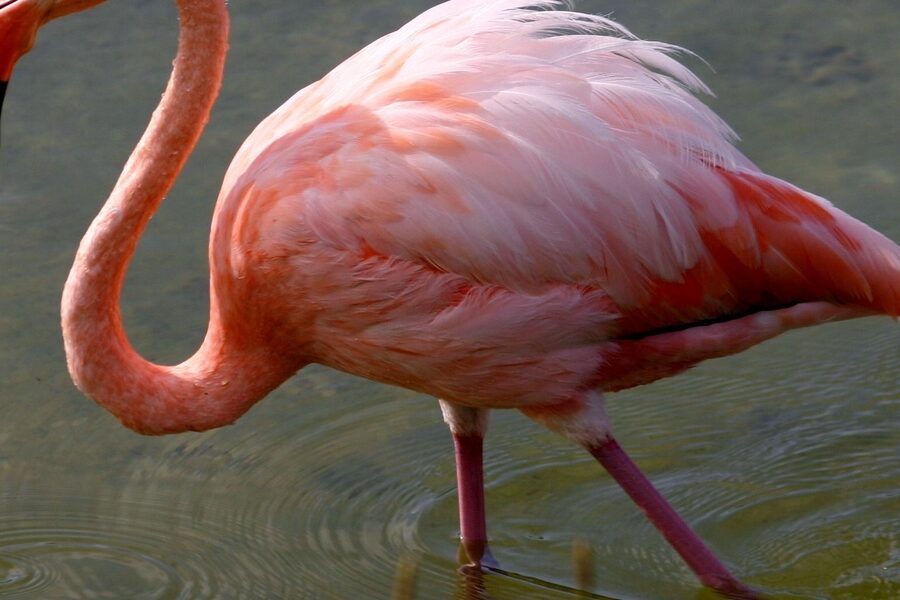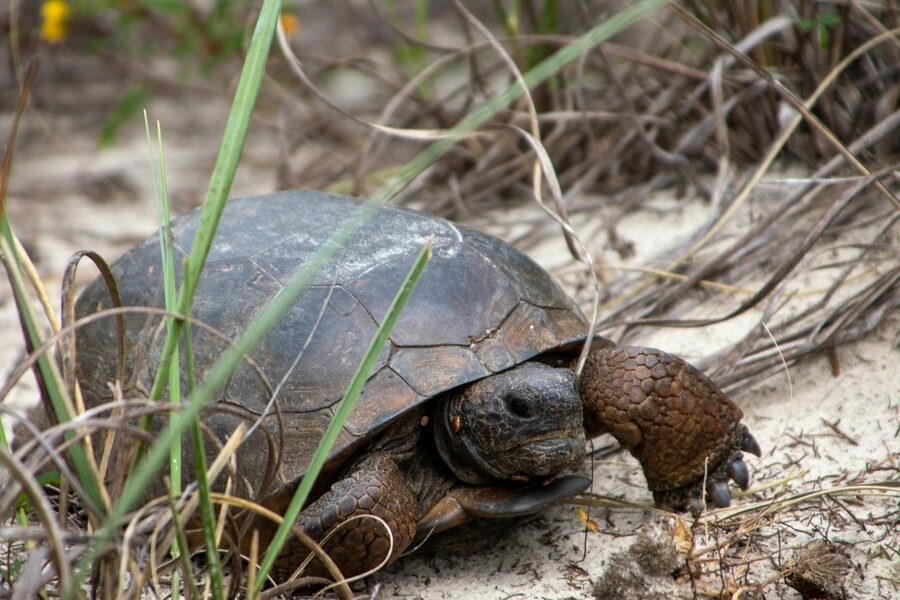Kenya’s mix of savanna, highland forests, freshwater lakes and Indian Ocean coast supports a wide range of wildlife, from insects and small mammals to big cats and large fish. A clear, single list helps you see species distribution quickly and choose what to look for in different regions.
There are 59 Animals of Kenya, ranging from Aardvark to Yellowfin tuna. For each species you’ll find below the Scientific name, Habitat/Where found, and IUCN status so you can compare taxonomy, where each animal occurs, and its conservation risk — see the full list you’ll find below.
How do I use the Scientific name, Habitat/Where found, and IUCN status columns when planning a visit or study?
Use the Scientific name to avoid confusion from regional common names, check Habitat/Where found to target likely locations and seasons, and consult IUCN status to understand conservation priorities; together they let you plan sightings while respecting vulnerable species.
Are all species on the list resident in Kenya or do some migrate or occur offshore?
Some species are resident (for example many terrestrial mammals), while others are seasonal or migratory and some, like Yellowfin tuna, occur offshore; check the Habitat/Where found entry for movement patterns and the IUCN status for population trends.
Animals of Kenya
| Name | Scientific name | Habitat/Where found | IUCN status |
|---|---|---|---|
| African elephant | Loxodonta africana | Savanna, Amboseli and Tsavo | Endangered |
| Black rhinoceros | Diceros bicornis | Dry scrub and Rift Valley reserves | Critically Endangered |
| White rhinoceros | Ceratotherium simum | Protected reserves like Ol Pejeta | Near Threatened |
| Lion | Panthera leo | Savanna parks, Maasai Mara and Tsavo | Vulnerable |
| Leopard | Panthera pardus | Woodland, mountains, and parks | Vulnerable |
| Cheetah | Acinonyx jubatus | Open grassland, Samburu, Maasai Mara | Vulnerable |
| African wild dog | Lycaon pictus | Open woodlands and Laikipia | Endangered |
| Spotted hyena | Crocuta crocuta | Savanna and grassland regions | Least Concern |
| Striped hyena | Hyaena hyaena | Arid north and eastern Kenya | Near Threatened |
| Hippopotamus | Hippopotamus amphibius | Rivers, lakes and Mara River | Vulnerable |
| Reticulated giraffe | Giraffa reticulata | Northern and northeastern Kenya | Endangered |
| Masai giraffe | Giraffa tippelskirchi | Southern Kenya, Amboseli and Maasai Mara | Endangered |
| Plains zebra | Equus quagga | Savanna, Maasai Mara and Amboseli | Near Threatened |
| Common eland | Taurotragus oryx | Woodland and savanna areas | Least Concern |
| Greater kudu | Tragelaphus strepsiceros | Woodland, thickets and escarpments | Least Concern |
| Impala | Aepyceros melampus | Woodland and savanna ecosystems | Least Concern |
| Thomson’s gazelle | Eudorcas thomsonii | Open grassland and plains | Near Threatened |
| Grant’s gazelle | Nanger granti | Semi-arid grasslands and shrubland | Near Threatened |
| Warthog | Phacochoerus africanus | Savanna and open woodland | Least Concern |
| Aardvark | Orycteropus afer | Woodland, savanna and termite-rich areas | Least Concern |
| African fish eagle | Haliaeetus vocifer | Lakes and rivers, Rift Valley lakes | Least Concern |
| Lilac-breasted roller | Coracias caudatus | Woodland edges and open savanna | Least Concern |
| Secretarybird | Sagittarius serpentarius | Open grassland and savanna | Vulnerable |
| Ostrich | Struthio camelus | Arid plains, open savanna regions | Least Concern |
| Lesser flamingo | Phoeniconaias minor | Alkaline lakes like Bogoria and Natron | Near Threatened |
| Greater flamingo | Phoenicopterus roseus | Coastal lagoons and shallow lakes | Least Concern |
| Grey crowned crane | Balearica regulorum | Wetlands, dambos and agricultural plains | Endangered |
| Marabou stork | Leptoptilos crumenifer | Wetlands, dumps and urban areas | Least Concern |
| Kori bustard | Ardeotis kori | Open dry savanna and plains | Near Threatened |
| Pied kingfisher | Ceryle rudis | Lakes, rivers and coastal estuaries | Least Concern |
| Malachite kingfisher | Corythornis cristatus | Ponds, slow rivers, reedbeds | Least Concern |
| White-headed vulture | Trigonoceps occipitalis | Savanna and open woodlands | Critically Endangered |
| Saddle-billed stork | Ephippiorhynchus senegalensis | Large wetlands and floodplains | Least Concern |
| African jacana | Actophilornis africanus | Floating vegetation on lakes and ponds | Least Concern |
| Superb starling | Lamprotornis superbus | Savanna, villages and acacia woodland | Least Concern |
| Helmeted guineafowl | Numida meleagris | Open woodland, farmland and savanna | Least Concern |
| Yellow-billed stork | Mycteria ibis | Shallow wetlands and floodplains | Least Concern |
| Hadada ibis | Bostrychia hagedash | Wetlands, rivers and urban gardens | Least Concern |
| African darter | Anhinga rufa | Slow-moving rivers, lakes and reedbeds | Least Concern |
| Nile crocodile | Crocodylus niloticus | Rivers, lakes and swamps like Tana | Least Concern |
| African rock python | Python sebae | Rocky outcrops, savanna and riverine forests | Near Threatened |
| Black mamba | Dendroaspis polylepis | Dry savanna, rocky outcrops and woodlands | Least Concern |
| Puff adder | Bitis arietans | Savanna and grassland habitats | Least Concern |
| Nile monitor | Varanus niloticus | Rivers, lakes and marshes | Least Concern |
| Agama lizard | Agama agama | Rocks, anthills and human settlements | Least Concern |
| African bullfrog | Pyxicephalus adspersus | Seasonal pools and grassland depressions | Least Concern |
| African clawed frog | Xenopus laevis | Ponds, streams and still waters | Least Concern |
| Common toad | Sclerophrys regularis | Gardens, savanna and wetlands | Least Concern |
| Reed frog | Hyperolius viridiflavus | Marshes, reedbeds and trees near water | Least Concern |
| Nile perch | Lates niloticus | Lake Victoria and large Kenyan lakes | Least Concern |
| Nile tilapia | Oreochromis niloticus | Lakes, reservoirs and rivers | Least Concern |
| African tigerfish | Hydrocynus vittatus | Rivers and lakes including Victoria | Least Concern |
| Yellowfin tuna | Thunnus albacares | Indian Ocean offshore waters | Near Threatened |
| Whale shark | Rhincodon typus | Coastal Indian Ocean and pelagic zones | Endangered |
| Humpback whale | Megaptera novaeangliae | Migratory in coastal Kenyan waters | Least Concern |
| Blue whale | Balaenoptera musculus | Deep offshore Indian Ocean | Endangered |
| Sperm whale | Physeter macrocephalus | Deep offshore waters and canyons | Vulnerable |
| Bottlenose dolphin | Tursiops truncatus | Coastal bays, estuaries and offshore | Least Concern |
| Olive ridley turtle | Lepidochelys olivacea | Nesting on some Kenyan beaches | Vulnerable |
Images and Descriptions

African elephant
The largest land mammal in Kenya, often seen in Amboseli and Tsavo. Known for tusks and complex social herds; look for large ears and trunk-swings. Faces poaching and habitat loss, with conservation focused on protected corridors and anti-poaching units.
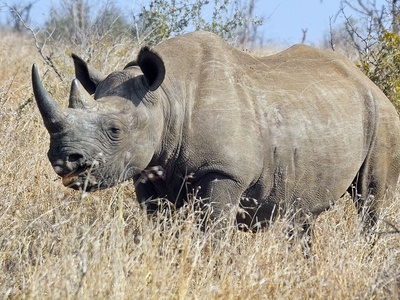
Black rhinoceros
A solitary, browser rhinoceros with a hooked upper lip for twigs and bushes. Extremely rare but protected in Kenyan reserves; key ID tip is the pointed lip and smaller size than white rhino. Recovery relies on intensive protection.
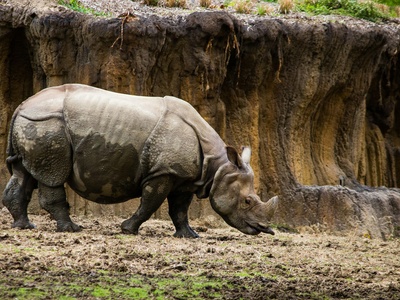
White rhinoceros
A large grazing rhino with a wide square lip, reintroduced to protected Kenyan conservancies. Often seen in open grasslands in sanctuaries; ID by its blunt snout and massive body. Conservation uses fenced reserves and translocations.
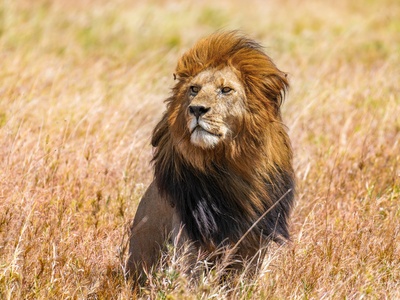
Lion
Iconic big cat of Kenya’s savannas, living in prides and hunting cooperatively. Look for tufted tails and social groups near water at dawn or dusk. Threats include habitat loss, prey decline, and human-wildlife conflict.
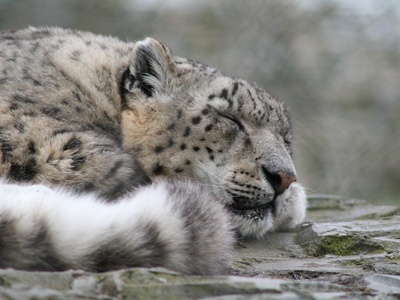
Leopard
Solitary and secretive big cat that often rests in trees and shows rosette spots. Seen at dusk or nighttime; ID by spots and stocky build. Faces poaching and conflict with livestock farmers.
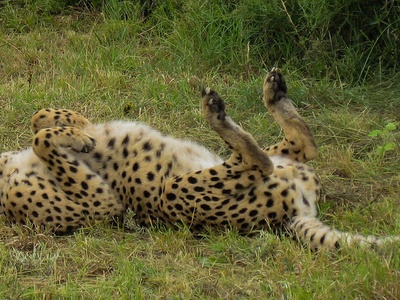
Cheetah
Slim, fast predator built for speed with tear streaks on the face and small head. Seen hunting in open plains; ID by slender body and non-retractile claws. Threatened by fragmentation and human pressures.

African wild dog
Highly social, painted-coated pack hunter with large rounded ears and long legs. Known for cooperative hunts and territorial ranges; see packs in protected rangelands. Very susceptible to disease and persecution.
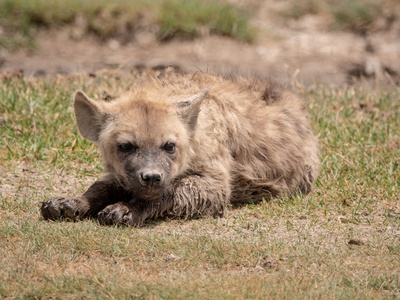
Spotted hyena
Widespread and vocal scavenger-predator with spotted coat and strong jaws. Found near carcasses and in prides that dominate competitors. ID by sloping back, rounded ears and characteristic whoops at dusk.
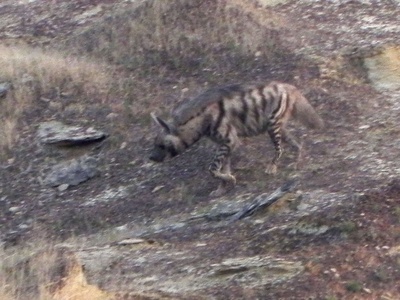
Striped hyena
Shy nocturnal scavenger with stripes and a crest along the back; smaller than spotted hyena. Mostly in dry bush and rocky areas. Often heard at night; faces persecution and low-density populations in arid regions.
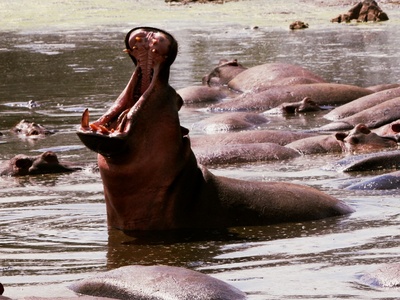
Hippopotamus
Massive semi-aquatic mammal often spotted basking in rivers or crossing at dusk. Recognizable by barrel body and big mouth; dangerous if approached. Threats include habitat loss and river pollution.
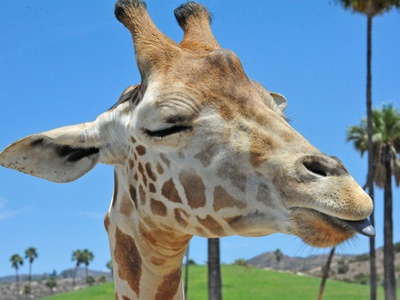
Reticulated giraffe
Distinctively patterned giraffe with net-like pale lines and orange-brown patches. Found in arid woodlands and open scrub; look for long neck silhouettes at waterholes. Population declines from habitat loss and fragmentation.
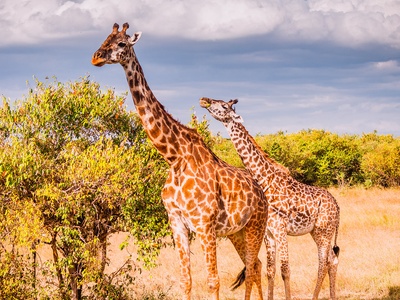
Masai giraffe
Tall savanna browser with jagged, vine-like star-shaped patches. Common in southern Kenya’s parks; ID by irregular patch edges. Threatened by poaching and landscape fragmentation.

Plains zebra
Striped equid common on grasslands; stripe pattern unique to individuals. Often forms mixed herds with wildebeest; ID by bold black-and-white stripes extending to belly. Faces habitat fragmentation and competition with livestock.
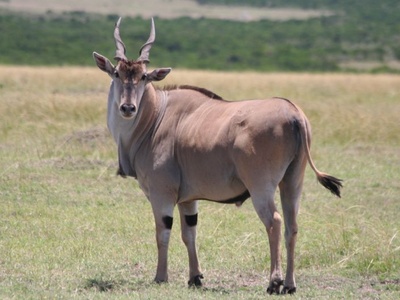
Common eland
Large spiral-horned antelope with a dewlap and sturdy build, browsing in mixed woodlands. Often seen in small herds; ID by large size and cream-colored coat. Locally hunted but populations stable in protected areas.

Greater kudu
Elegant spiral-horned antelope with thin white stripes and long horns in males. Prefers dense cover; ID by vertical body stripes and corkscrew horns. Susceptible to habitat loss but still widespread in protected woodlands.
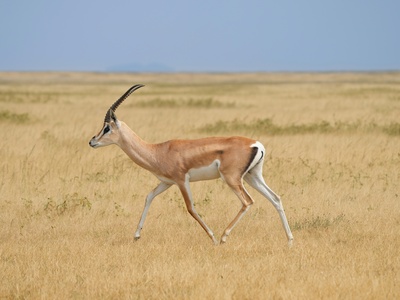
Impala
Graceful medium-sized antelope often in mixed-species herds with gazelles. Look for lyre-shaped horns on males and a characteristic facial mask; common around water. Highly adaptable and common in many parks.

Thomson’s gazelle
Small, agile gazelle of the Serengeti-Maasai Mara ecosystem with a black flank stripe and white rump. Often targeted by cheetahs; ID by slender build and fast, erratic runs. Populations pressured by habitat change.
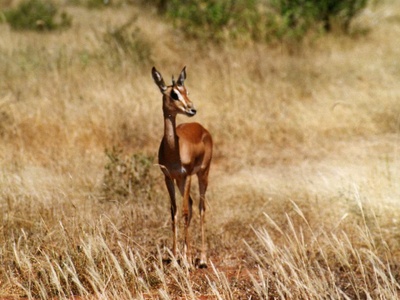
Grant’s gazelle
Long-legged gazelle with white underparts and curved horns in males. Found in drier habitats and open plains; ID by narrow face and tall stance. Threatened by hunting and land-use change.

Warthog
Mediterranean-looking pig with tusks and a distinctive face, often seen grazing on short grass. Lives in burrows and runs with tails erect when alarmed. Common and adaptable near water and farmland edges.
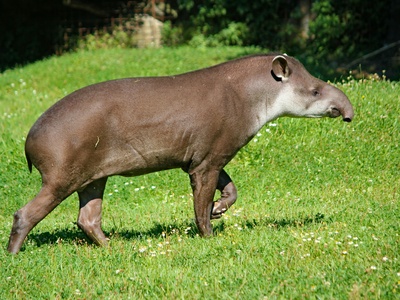
Aardvark
Nocturnal ant-eating mammal with tubular snout and strong digging feet. Mostly seen at night or by fresh burrows; ID by long ears and pig-like body. Important for termite control and as burrow engineers.
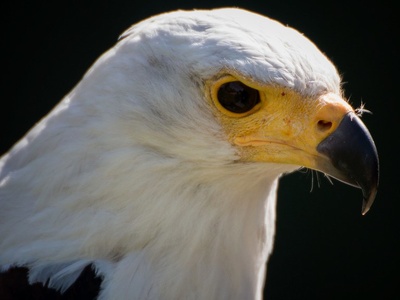
African fish eagle
Powerful raptor often perched by water, acclaimed for its piping call. Hunts fish with talons; ID by white head, chestnut body and strong hook beak. A familiar and photogenic lakeside species.
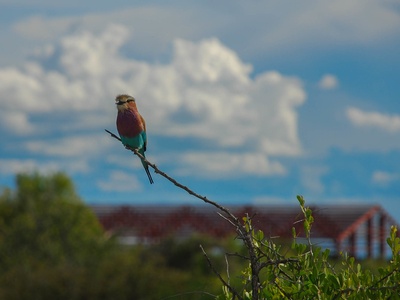
Lilac-breasted roller
Colorful perching bird with lilac breast and bright blue wings, often seen on telegraph poles. Performs rolling aerial displays; ID by vivid colors and stout bill. A favorite for photographers.
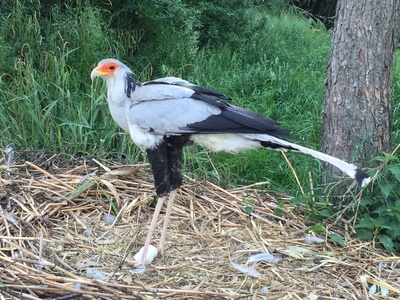
Secretarybird
Tall, crane-like raptor that hunts on foot, famous for stomping snakes. Distinctive crest and long legs make it easy to spot on plains. Vulnerable due to habitat loss and disturbance of breeding sites.

Ostrich
World’s largest bird, flightless and fast-running, found in arid and semi-arid areas. Males are black-and-white, females brownish; ID by long neck and two-toed feet. Hunted historically but abundant in protected areas.
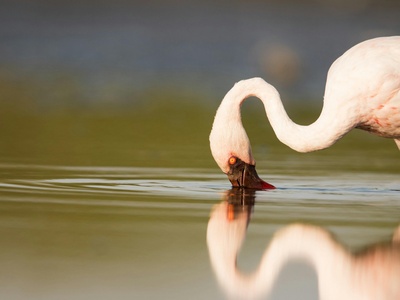
Lesser flamingo
Tiny pink flamingo that feeds on cyanobacteria in alkaline lakes, forming vast, vivid flocks. ID by small size and deep pink plumage. Sensitive to water level and pollution changes.
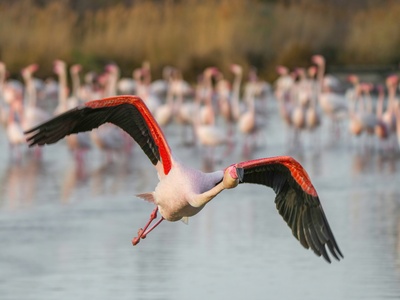
Greater flamingo
Large pink wader seen in flocks on coastal and inland lagoons, filtering invertebrates with downturned bill. ID by long legs and curved neck. Locally abundant but dependent on wetland health.

Grey crowned crane
Elegant crane with golden crest, loud calls, and courtship dances in wetlands and farms. ID by crown of stiff golden feathers and red throat pouch. Threatened by wetland loss and illegal trade.
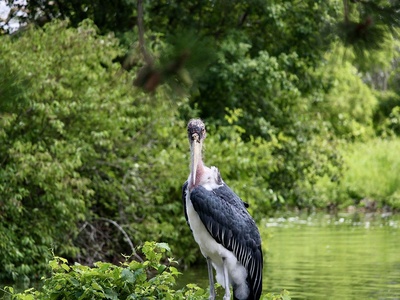
Marabou stork
Large scavenging stork with bare head and huge bill, often found around towns and landfills. Recognizable by drooping pouch and large wingspan; ID by stork silhouette and scavenging behavior.

Kori bustard
One of the heaviest flying birds, prefers open plains and semi-desert. Males are large and often perform display bows; ID by mottled plumage and heavy gait. Sensitive to human disturbance.
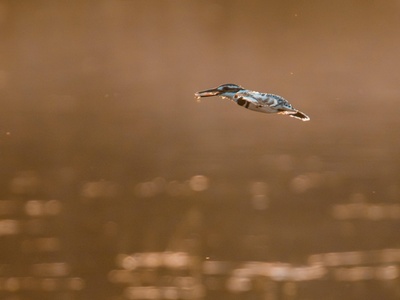
Pied kingfisher
Hovering fishing bird often seen above water before diving for fish. Black-and-white plumage and crest make it distinctive; ID by its hovering behavior and loud calls.
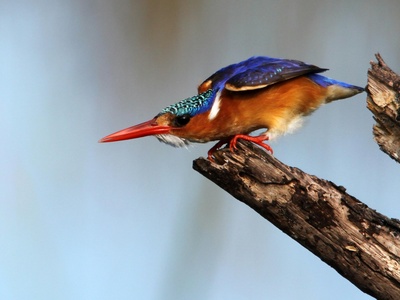
Malachite kingfisher
Tiny brilliantly colored kingfisher with blue back and orange belly, often perches low over water. ID by rapid plunge-dives for small fish; common on sheltered waterways and marsh edges.

White-headed vulture
A rare large vulture with white head and broad wings, scavenging carcasses in open country. Declining steeply from poisoning and habitat loss; spot at carcasses or soaring over plains.

Saddle-billed stork
Tall, striking stork with black-and-white plumage and colorful bill; often seen wading in shallow lakes. ID by its long legs and dramatic bill patterns.
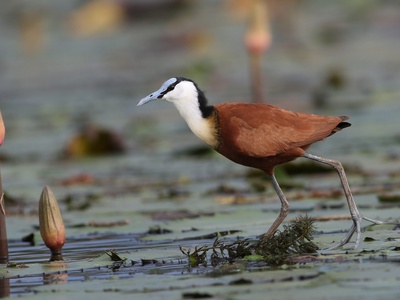
African jacana
Long-toed wader that walks on lily pads, feeding on insects and crustaceans. Brown body with chestnut wings; ID by long toes and floating habit. Common on well-vegetated lakes.

Superb starling
Vibrant iridescent bird with blue chest and orange belly; often seen in flocks near human settlements. ID by glossy plumage and chattering calls. Adapts well to gardens and town edges.

Helmeted guineafowl
Ground-dwelling bird with spotted plumage and bare blue head; often in noisy flocks. Common near farms and grassland; ID by helmet-like head and spiky calls.
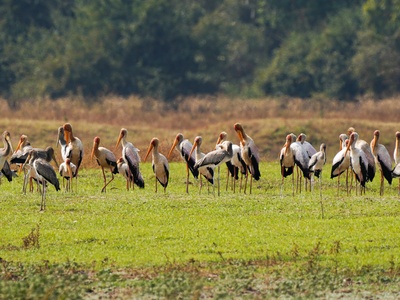
Yellow-billed stork
White stork with yellow bill and pink legs that probes for fish in shallow water. Often seen in mixed colonies; ID by long decurved bill and stately foraging.
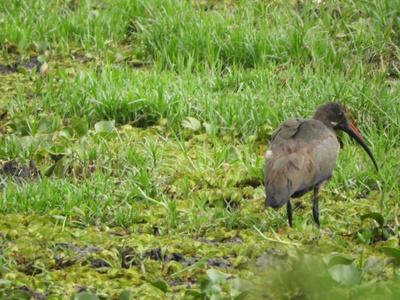
Hadada ibis
Large, noisy ibis with olive-brown plumage and distinctive loud “haa-haa-haa” call heard in towns and wetlands. Probes mud for insects; ID by robust curved bill.
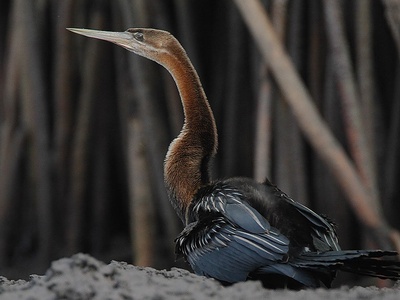
African darter
Long-necked water bird that swims low with only neck above water; dries wings perched on branches. ID by snake-like neck and thin bill. Common along quiet waterways.

Nile crocodile
Large apex aquatic predator that basks on riverbanks and ambushes prey at water’s edge. ID by armored skin and powerful jaws. Important to respect at close range and observe from safe distances.
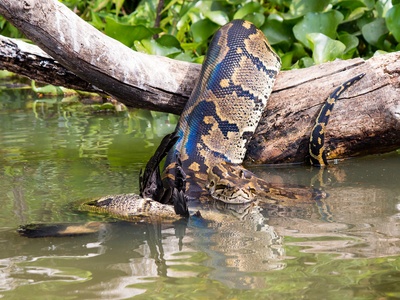
African rock python
Massive constrictor that hides in rocks and tall grass; nonvenomous and ambushes mammals and birds. ID by heavy, patterned body and slow movement. Faces persecution and habitat loss.
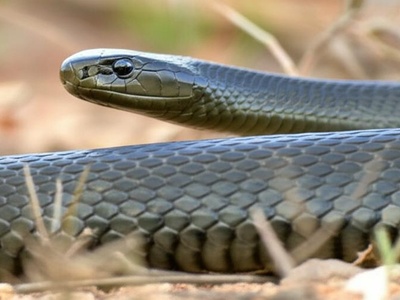
Black mamba
Highly venomous and fast-moving snake, typically dark olive to gray with coffin-shaped head. Avoidance is key; ID by large size and coffin-shaped head. Rarely aggressive if undisturbed.
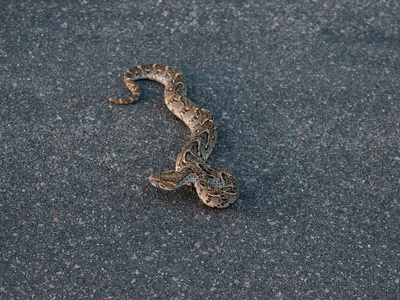
Puff adder
Stout venomous viper with cryptic pattern, often camouflaged on the ground and ambushes prey. ID by triangular head and slow, heavy body. Frequently encountered and should be given wide berth.
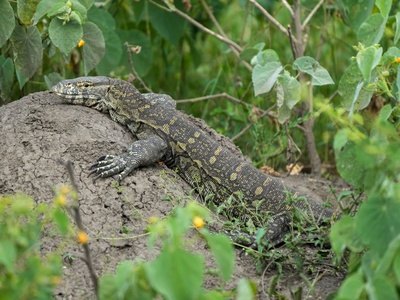
Nile monitor
Large, agile lizard often seen swimming or climbing near water; feeds on fish and eggs. ID by long neck and forked tongue. Common along Kenyan waterways.
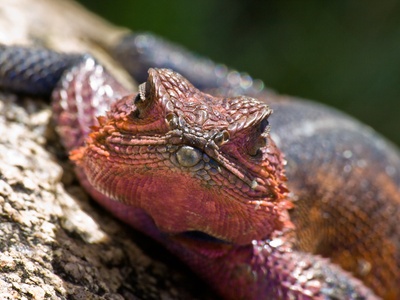
Agama lizard
Colorful small lizard with males showing blue and orange hues during breeding; often basks on rocks and walls. ID by triangular head and rapid bobbing displays.

African bullfrog
Large burrowing frog that aestivates in dry season and emerges to breed explosively in rains. Males guard tadpoles; ID by bulky body and loud mating calls. A dramatic seasonal presence.
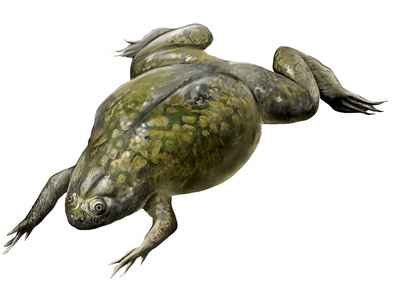
African clawed frog
Aquatic frog with flattened body and clawed hind feet often hidden under water. Common in slow freshwater; ID by smooth skin and webbed feet. Often active at night.

Common toad
Warty-skinned amphibian adaptable to many habitats and often seen around human habitations at night. Emits a dry rasping call; ID by stocky body and parotoid glands behind eyes.

Reed frog
Small colorful tree frog often heard calling from reeds at dusk. Many color morphs exist; ID by bright dorsal patterns and sticky toe pads for climbing.
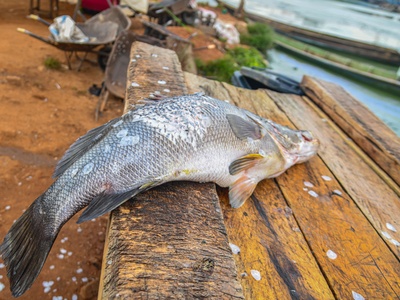
Nile perch
Large predatory fish introduced to Lake Victoria with big ecological impact; up to large sizes and famed by anglers. ID by deep body and predator habits. Important economically and ecologically.
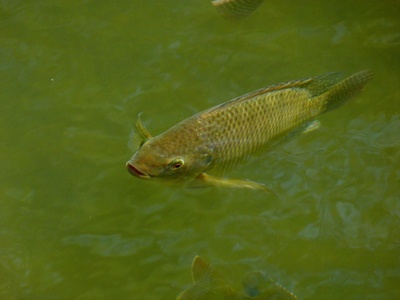
Nile tilapia
Widespread cichlid important for fisheries and aquaculture; tolerant of varied conditions. ID by deep body and spiny dorsal fin. Both native and introduced populations support local fisheries.
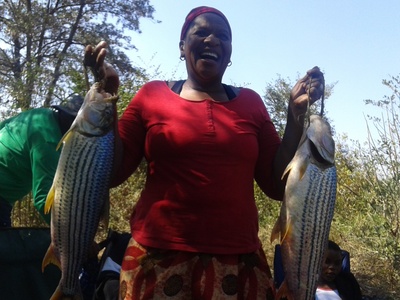
African tigerfish
Fierce predatory freshwater fish with sharp teeth and silvery body that leaps when hooked. Popular with sport anglers; ID by strong jaw and torpedo shape.
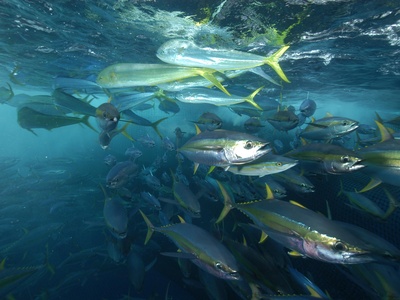
Yellowfin tuna
Powerful pelagic tuna sought by fisheries off Kenya’s coast; identified by bright yellow fins and streamlined body. Migratory and commercially important; faces fishing pressure requiring management.

Whale shark
World’s largest fish, gentle filter-feeder visiting Kenyan waters seasonally. Identified by broad flat head and white spot pattern; an unforgettable snorkel encounter when present.

Humpback whale
Acrobatic baleen whale that migrates past Kenya’s coast; famous for breaching and songs. Look offshore in migration seasons; ID by long pectoral fins and knobbly head.
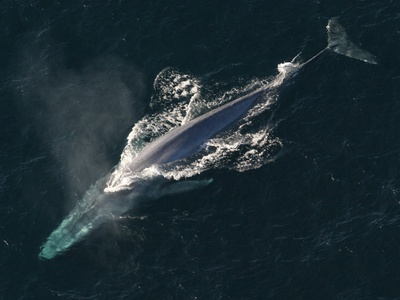
Blue whale
Largest animal on Earth, rare off Kenya but seen in deep waters. Characterized by immense size and small dorsal fin; ID by broad blue-gray back and blow. Global threats include ship strikes and noise.

Sperm whale
Deep-diving toothed whale with large square head and social groups; rare but present off Kenya. ID by huge head and powerful single blow. Threatened historically by whaling and now by deep-sea hazards.
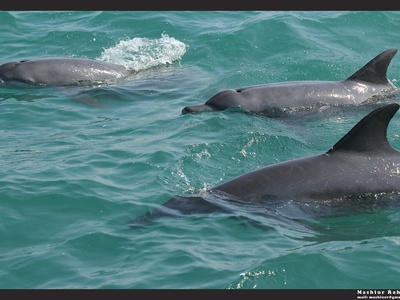
Bottlenose dolphin
Familiar, intelligent dolphin often seen bow-riding near boats along the Kenyan coast. Robust body and curved dorsal fin; ID by friendly social pods and acrobatic behavior.
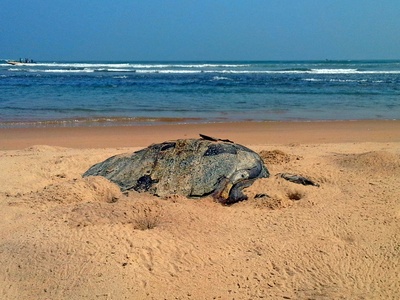
Olive ridley turtle
Small to medium sea turtle that nests in aggregations on beaches; often seen offshore. ID by heart-shaped shell and olive color. Threatened by bycatch and coastal development; conservation includes beach protection.
